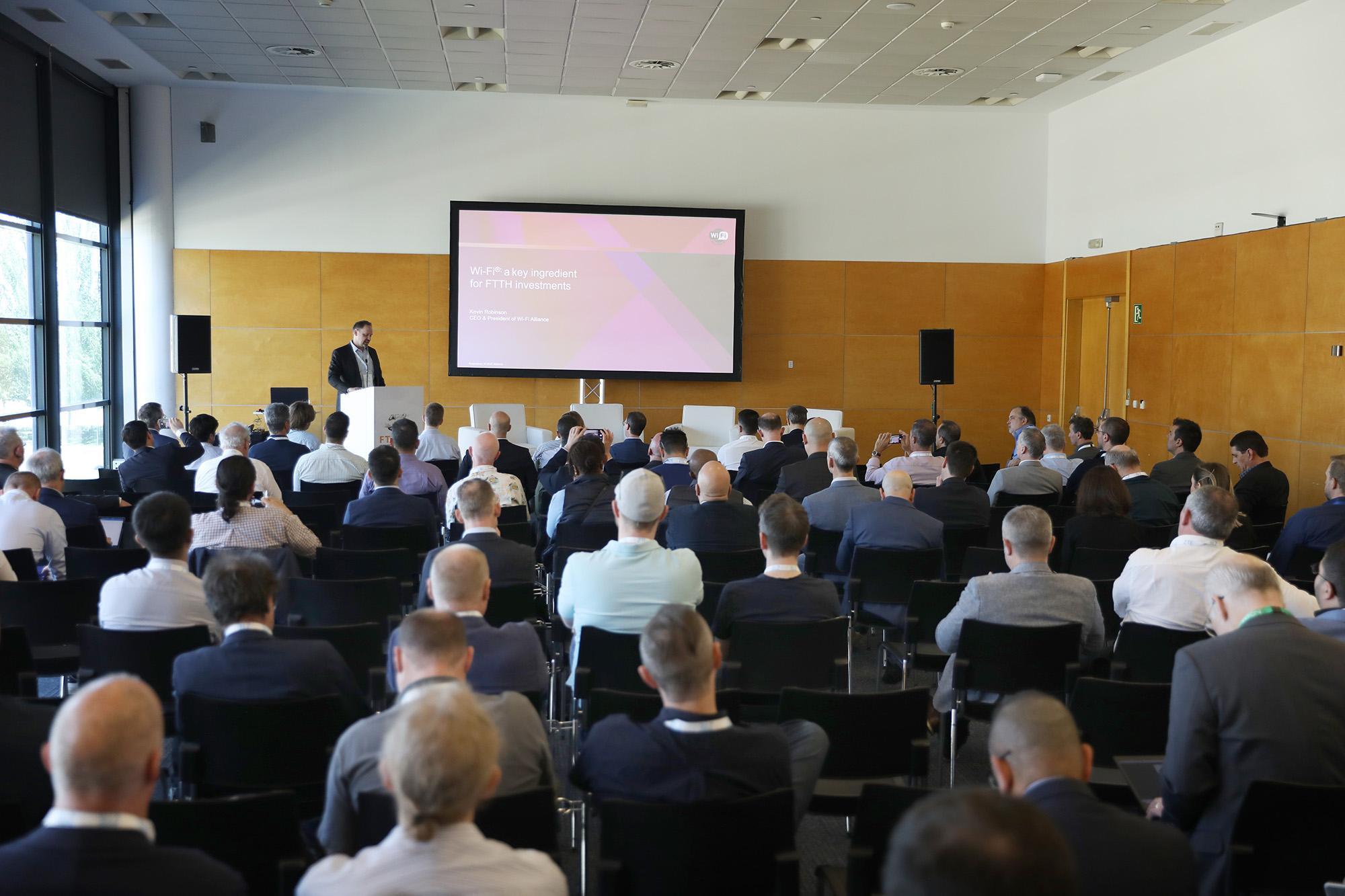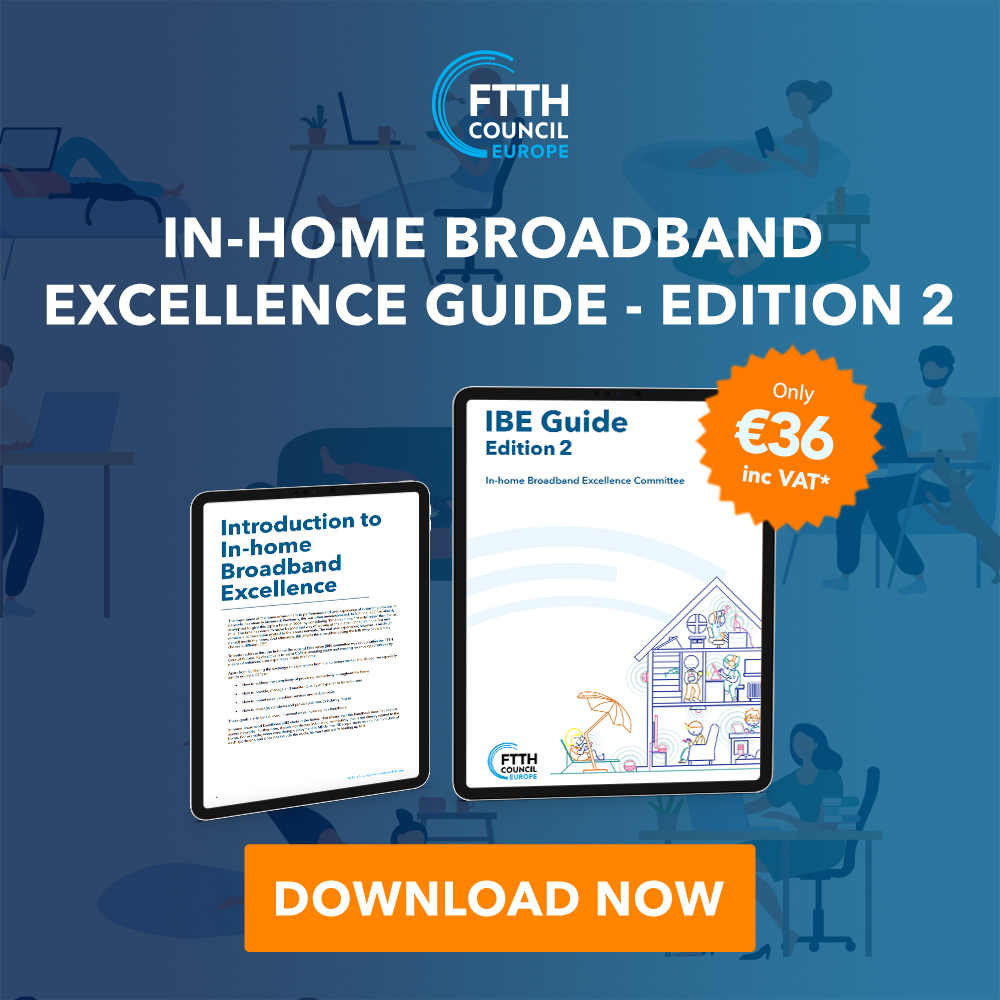
Why is In-Home Broadband Excellence strategically relevant for CSPs, and how does it relate to fibre network deployment strategies in the European Union?
For many years, focus for CSPs has been on rolling out fibre to keep up with consumer demand for better broadband connectivity (and lately to help reduce carbon footprint as well). However, with focus on fibre deployment, the in-home network has become underserved and is now almost always the bottleneck to deliver good quality service.
Many events in our industry have recently come together to require a change in approach. Not only have we reached 50%+ homes passed, but as Thomas Miller of the Investors committee said in the last episode, the investment landscape has changed significantly. We also see costs of deployment going up and labour continuing to be an issue. Therefore it’s important to focus on take-up rate instead of (only) homes-passed.
The In-home broadband network is critical for this, as end-users will not see the value of fiber if they don’t get great Wi-Fi as well. Moreover, a good in-home broadband network can provide the basis for adding new services to the CSP offering, which can provide great opportunity for much needed ARPU increase and retention as well.
In the picture above, an attentive audience during the In-Home Broadband Excellence workshop at the FTTH Conference 2023 in Madrid.
In such a rapidly evolving time for our industry, what are the main trends that CSPs should look at, and how could these contribute to a successful business?
On the in-home network side, there is a lot of buzz about Wi-Fi 7, of course. While it’s certainly a trend to keep a close eye on, at the same time, such new technology will take time to get adopted, and have a high premium that certain consumer enthusiasts are prepared to pay at the start, but the diverse CSP consumer base may not be ready for, for a while.
A second trend that I would highlight is that of IoT and the Smart Home. While this is something that has been talked about for more than a decade, there are now finally signals that technology is becoming mature enough to deploy by CSPs and instead of just bringing cost and complexity may actually start to increase ARPU. New standards such as Matter and Thread are well positioned to finally break through, even if much work still needs to be done on interop in the field instead of just on paper.

You recently launched a revamped edition of the In-Home Broadband Excellence Guide: could you tell us a bit more about this asset, and what changes from the previous issue?
The IBE Guide is a great source of information for CSPs to stay up to speed on the in-home network. Technology evolves quickly, but even more so in the home environment, with Wi-Fi and consumer technology changing almost daily. Home infrastructure, management and new services are all key topics that are addressed from CSP perspective in the Guide, and the IBE Committee works hard to provide updated and added content in every edition.
There are few, if any, resources where these aspects are all coming together in a compact but comprehensive form. CSPs that read the Guide will get more understanding of the state of technology, how it can be applied in a CSP business environment, and perhaps most importantly: where to be critical of vendor stories, balance the pros with the cons, and enable CPSs to ask the right questions to drive their specific business needs.
You certainly started the preparations for the next FTTH Conference: what should we expect from the IBE Committee in Berlin?
Yes, preparations are in full swing. Besides releasing a new edition of the IBE Guide, we have planned a workshop where we address the topic of new services and increasing ARPU. We will bring several examples of services to the table, but would especially like to discuss the state of Matter and Thread. Both as example of a new service, but also to look at the underlying technology of Containerisation. Containerisation is a very interesting topic, because on the one hand it may not be clear to CSPs why it’s such an essential part of bringing new services to market quickly and cost effectively, while on the other hand the underlying technology offers many ways to implement it, each with their pros and cons. So understanding this topic will be essential for CSPs moving ahead, and the workshop will be an ideal place for us to help them. We look forward to a fruitful discussion at the next FTTH Conference in Berlin!